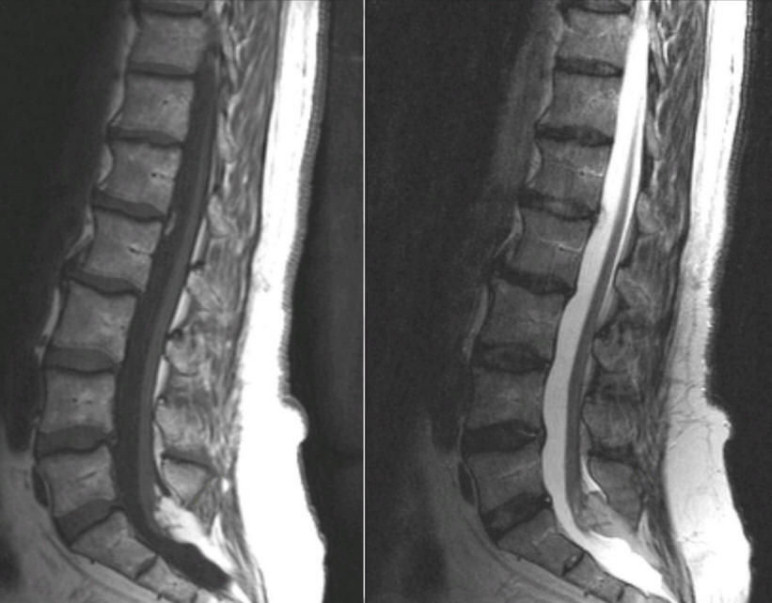
A 67 year-old man presented with a life long history of bladder urgency and a 5 year history of progressive weakness and numbness of the lower extremities, worst on the left. His gait had become unsteady.

![]()
![]()
(Left) Sagittal MRI T1-weighted image; (Right) Sagittal T2-weighted image. Note that the spinal cord end below the level and terminates in a lipoma, seen as bright on both T1 and T2). . This is an example of a tethered cord. The spinal cord in adults normally terminates at the level of the L1 vertebral body. Tethered spinal cord syndrome can present with a slowly progressive myelopathy much like the syrinx. Often, symptomatic tethered cords present with an orthopaedic deformity. The orthopaedic abnormalities associated with the tethered cord can be varus, valgus, or cavus changes of the foot; recurrent dislocations of the hip; or rotational abnormalities of an extremity or extremities. An isolated presentation of scoliosis is not uncommon. Patients can occasionally present with progressive isolated gait abnormalities such as spastic or wide-based gaits. In addition to orthopaedic deformities, patients with tethered cords may present with spinal cord and or, less commonly, root dysfunction.
Revised
05/09/06.
The Electronic Curriculum is copyrighted 1998, Case Western Reserve University
School of Medicine.